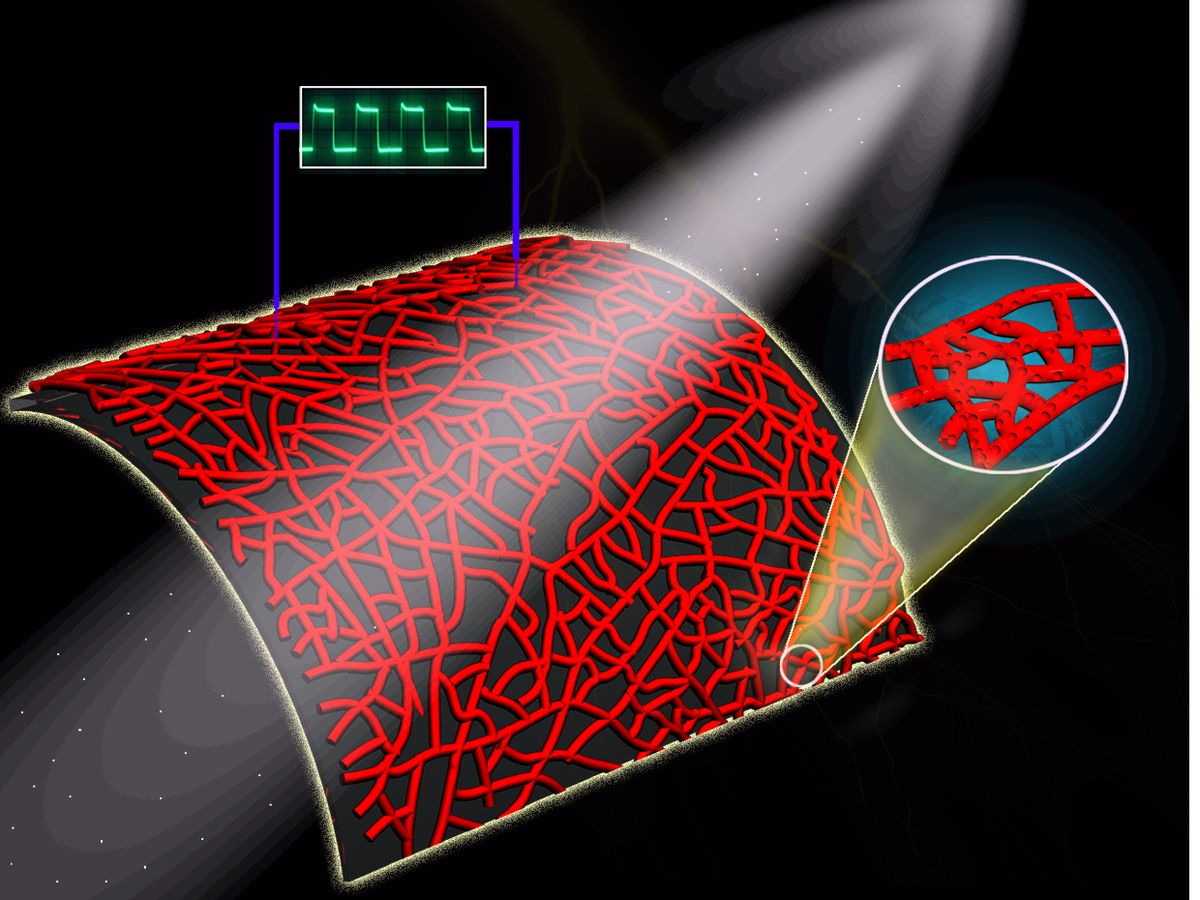Transparent photodetectors are at the heart of how today’s touch-screen displays function. The material indium tin oxide (ITO) has kept that heart beating over the years by serving as a transparent conductor for controlling display pixels. While nanomaterials such as carbon nanotubes and graphene have been tapped as potential replacements for ITO, the old king has held its throne.
Now an international group of researchers from India and Ireland have developed a new approach based on transparent nanowire networks made from silicon-on-insulator (SOI) that appears it could finally take the crown from ITO.
In research described in the journal ACS Nano, researchers from the Indian Association for the Cultivation of Science (IACS) and the Centre for Research on Adaptive Nanostructures and Nanodevices (CRANN) in Ireland have for the first time fabricated silicon (Si) nanowire networks with seamless junctions.
The major breakthrough was not simply fabricating a Si nanowire network with seamless junctions, but also transferring that network onto a flexible polymer substrate, according to according to K. Mallikarjuna Rao, a scientist at IACS and co-author of the study. This process should open up avenues to fabricating transparent and flexible devices for all materials.
While the process may have a broader impact in the long run, the seamless junctions between the wire segments eliminate the thorny problem of contact resistance in these devices, opening up the potential for high-speed operation.
“Existing solutions involve the use of nanoscale materials either in the form of nanowire networks or 2D materials,” said Rao. “These approaches are plagued with problems associated with the junction resistance between the material components leading to slow and inefficient devices.”
Rao and his colleagues claim that for the first time they have been able to achieve both high transparency and excellent photoresponse together in the same device without the typical tradeoff between the two. The nanowire networks show high transparency (~92 percent at 550 nanometers), broadband photodetection (350 nm to 950 nm) with excellent responsivity (25 amps/Watt), ultra-fast optical response time (155 microseconds) and mechanical flexibility (1000 cycles). “This performance is second to none, using a fabrication process that is low cost and extendible to materials beyond silicon,” said Rao.
Rao believes that it is the low-cost fabrication process in combination with its flexibility that gives this approach a chance to replace ITO. “There are no transparent or flexible photodetectors on the market,” said Rao. “If we can make a product, it could attract a huge market. The performance of the device is better than commercially available rigid and opaque photodetectors.”
While an overall replacement for ITO offers a huge market, the researchers highlighted “smart window” technologies in their paper. This is based on the fact that the device has the potential to produce transparent cameras and transparent CMOS photodetectors.
In future research, Rao and his colleagues are planning to fabricate transparent solar cells using this approach.
Rao added: “Integration of transparent solar cells into windows is of particular interest since it opens the prospect of employing the entire facade of a building for solar power generation, rather than simply employing the limited roof space.”
Dexter Johnson is a contributing editor at IEEE Spectrum, with a focus on nanotechnology.



